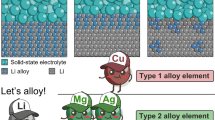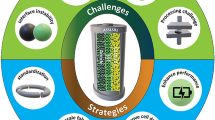Abstract
Purpose
Hadron therapy, utilizing carbon Ions and protons, is a promising medical treatment for cancer. However, the effectiveness of carbon ions is constrained by infrastructure limitations, particularly in accelerator halls with standard resistive magnet synchrotrons and gantries. The advent of superconducting (SC) magnets presents a transformative solution. The purpose of this study is to give an overview of the superconducting magnets projects led by INFN focused on the hadron therapy.
Methods
In the introduction the study analyzes the current infrastructure limitations of hadron Therapy. Furthermore, ongoing European projects such as HITRIplus, I.FAST, and SIG, driven by the INFN, are examined to highlight the momentum toward SC magnets in hadron therapy. Initiatives like ESABLIM and IRIS, emphasizing energy-saving technologies, are also discussed in the context of operational infrastructure plans.
Results
The implementation of superconducting magnets in hadron therapy gantries yields significant advantages. These include a substantial reduction in weight, a decrease in the number of required magnets, a smaller footprint, and lower costs. Moreover, compact accelerators and gantries minimize the need for extensive civil construction. The reduction in power consumption further underscores the superiority of SC magnets over their normal conducting counterparts.
Conclusion
The integration of superconducting magnets in heavy ions facilities for medical applications offers more compact and economically sustainable structures. Collaborative projects like HITRIplus, SIG, I.FAST, ESABLIM, and IRIS are advancing superconducting magnet technology for medical accelerators and gantry magnets. This mutual interest between superconducting magnet technology and hadron therapy signifies promising advancements in healthcare innovation.












Similar content being viewed by others
Availability of data and materials
There is no original data in this manuscript.
Code availability
Not applicable.
References
Degiovanni Alberto, Amaldi Ugo. History of hadron therapy accelerators. Phys Med. 2015;31(4):322–32. https://doi.org/10.1016/j.ejmp.2015.03.002.
Haberer TH, Debus J, Eickhoff H, Jäkel O, Schulz-Ertner D, Weber U. The Heidelberg Ion Therapy Center. Radiot Oncol. 2004;73:S186–90. https://doi.org/10.1016/S0167-8140(04)80046-X.
Rossi L, Ballarino A, Barna D, Benedetto E, Calzolaio C, Ceruti G, De Matteis E, et al. A European Collaboration to Investigate Superconducting Magnets for Next Generation Heavy Ion Therapy. IEEE Trans Appl Supercond. 2022;32(4):1–7. https://doi.org/10.1109/TASC.2022.3147433.
Benedetto E, Al Harbi N, Brouwer L, Tommasini D, Prestemon S, Riboni P, Amaldi U. A Carbon-Ion Superconducting Gantry and a Synchrotron Based on Canted Cosine Theta Magnets. 2021. arXiv.org. https://doi.org/10.48550/arxiv.2105.04205.
Rossi L. Magnet, Technology and Design of Superconducting Magnets for Heavy Ion Gantry for Hadron Therapy. J Phys Conf Series. 2024;2687:092009. https://doi.org/10.1088/1742-6596/2687/9/092009.
Iwata Y, Noda K, Shirai T, Murakami T, Furukawa T, Mori S, Fujita T et al (2012) Design of a Superconducting Rotating Gantry for Heavy-Ion Therapy. Physical review special topics PRST-AB. Accelerators and Beams 15(4):044701. https://doi.org/10.1103/PhysRevSTAB.15.044701.
Takayama S, Yazawa T, Asano M, Misawa M, Nagamoto Y, Amano S, Orikasa T, et al. Design and Magnetic Field Measurement of the Superconducting Magnets for the Next-Generation Rotating Gantry. IEEE Trans Appl Supercond. 2022;32(6):1–4. https://doi.org/10.1109/TASC.2022.3160973.
Rossi S, Cirilli M, Dosanjh M, Durante M, Facoetti A, Fossati P, Graeff C, et al. PO-1529 HITRIplus Project: Building a Pan-European Heavy Ion Therapy Research Community. Radiot Oncol. 2021;161:S1253–S1253. https://doi.org/10.1016/S0167-8140(21)07980-9.
I.FAST. Innovation fostering in accelerator science and technology. 2021. Available: https://I.FAST-project.eu/home.
Rossi L, Benedetto E, De Matteis E, Farinon S, Felcini E, Karppinen M, Mariotto S, et al. Preliminary Study of 4 T Superconducting Dipole for a Light Rotating Gantry for Ion-Therapy. IEEE Trans Appl Supercond. 2022;32(6):1–6. https://doi.org/10.1109/TASC.2022.3157663.
Rossi L, Mariotto S, Sorti S. Energy Saving Magnets for Beam Lines. JACoW IPAC2023. 2023; THPM043. https://doi.org/10.18429/JACoW-IPAC2023-THPM043.
Rossi L, et al. IRIS - a New Distributed Research Infrastructure on Applied Superconductivity. IEEE Trans Appl Supercond. 2024;34(3):1–9. https://doi.org/10.1109/TASC.2023.3341984.
HITRIplus. Heavy ion therapy research integration. 2021. Available: https://www.HITRIplus.eu/.
De Matteis E, et al. Straight and Curved Canted Cosine Theta Superconducting Dipoles for Ion Therapy: Comparison between Various Design Options and Technologies for Ramping Operation. IEEE Trans Appl Supercond. 2023;33(5):1–6. https://doi.org/10.1109/TASC.2023.3259330.
Toral F, et al. Status of Nb-Ti CCT Magnet EU Programs for Hadron Therapy. IEEE Trans Appl Supercond. 2024;34(5):1–5. https://doi.org/10.1109/TASC.2023.3349252.
Veres D et al. A New Algorithm for Optimizing the Field Quality of Curved CCT Magnets. IEEE Trans Appl Supercond. 2022;32.5:1-14. Web. https://doi.org/10.1109/TASC.2022.3162389.
Damjanovic Sanja. SEEIIST: South East European International Institute for Sustainable Technologies. Europhys News. 2019;50(4):31–2. https://doi.org/10.1051/epn/2019404.
I.FAST WP8 members. First Engineering Design of HTS Demonstrator. Zenodo. 2023. https://doi.org/10.5281/zenodo.7930115.
De Matteis E et al. Conceptual design of an HTS Canted Cosine Theta dipole magnet for research and hadron therapy accelerators. IEEE Trans Appl Supercond. 2024; pp 1-5. https://doi.org/10.1109/TASC.2024.3360210.
Amaldi U et al. Sigrum-A superconducting Ion Gantry with Riboni’s unconventional mechanics, ATS Dept., Geneva, Switzerland, Rep. CERNACC-NOTE-2021-0014. 2021.
Prioli M, et al. Design of a 4 T Curved Demonstrator Magnet for a Superconducting Ion Gantry. IEEE Trans Appl Supercond. 2023;33(5):1–5. https://doi.org/10.1109/TASC.2023.3244523.
Prioli M et al. First Winding Trial for the Superconducting Ion Gantry (SIG) Dipole Demonstrator Magnet. IEEE Trans Appl Supercond. 2024; pp 1-5. https://doi.org/10.1109/TASC.2024.3361440.
Rossi L et al. Design and Plan of a 10 T HTS Energy Saving Dipole Magnet for the Italian Facility IRIS. IEEE Trans Appl Supercond. 2024; pp 1-6. https://doi.org/10.1109/TASC.2024.3355357.
Acknowledgements
The author gratefully acknowledges Sandro Rossi, General Director of CNAO and Coordinator of the H2020-HITRIplus project, for his invaluable support and guidance. Special appreciation is also due to Lucio Rossi (University of Milan), who served as the project leader of the IRIS project, Marco Prioli (INFN-LASA), who led WP2 of the SIG project, and Samuele Mariotto (University of Milan), for his role in overseeing the ESABLIM program at the University of Milan. Furthermore, I would like to express my appreciation to all the colleagues involved in WP8s of the HITRIplus and I.FAST projects, and colleagues of INFN-LASA for their contributions and collaboration throughout this endeavor.
Funding
The author(s) have received no funding for this article.
Author information
Authors and Affiliations
Corresponding author
Ethics declarations
Ethics approval
No Ethical Approval was required for this article.
Consent to participate
No Consent to Participate was required for this article.
Consent for publication
No Consent to Publish was required for this article.
Conflict of interest
The author(s) have no competing interests.
Additional information
Publisher's Note
Springer Nature remains neutral with regard to jurisdictional claims in published maps and institutional affiliations.
Rights and permissions
Springer Nature or its licensor (e.g. a society or other partner) holds exclusive rights to this article under a publishing agreement with the author(s) or other rightsholder(s); author self-archiving of the accepted manuscript version of this article is solely governed by the terms of such publishing agreement and applicable law.
About this article
Cite this article
De Matteis, E. New technologies: superconducting magnets. Health Technol. (2024). https://doi.org/10.1007/s12553-024-00849-4
Received:
Accepted:
Published:
DOI: https://doi.org/10.1007/s12553-024-00849-4




